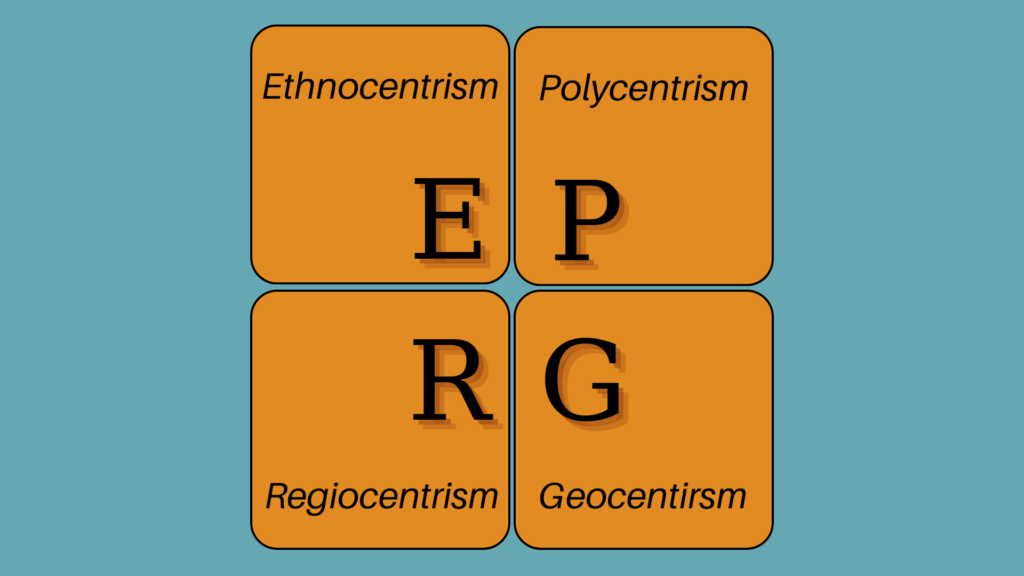If there’s one thing that every marketer knows – it’s that you should always tailor your strategies depending on your target audience.
One size does NOT fit all.
This is why you’ll notice – the first step in the marketing management process is always: Analysis of the target market. You need to know who’s at the other end of your marketing efforts to successfully market to them.
This means that marketing efforts vary from one target segment to the other, based on characteristics including:
~ Demography (age, gender, marital status, etc.)
~ Psychography (interests, values, opinions, etc.)
~ Behaviour (spending habits, brand loyalty, etc.)
Lastly, the characteristic we’ll be primarily focusing on: Geography.
The geographic features of a market including population density, climate, time zone, dominant language, etc. directly impact its business ecosystem. From logistics and labour to market positioning and communication – all crucial business functions hinge on the geographic segments.
So naturally, as a marketer, or anyone in the business for that matter, you must understand the nuanced implications that these (geographic) variables bring about.
For today’s blog, we’ll analyse how marketing efforts and strategies change depending on one specific geographic segment (variable), that is country (nation). We will explore the meaning of international marketing, its different features, the EPRG framework, cultural sensitivity, and distribution strategies in international markets (or global markets).
Table of Contents
Shall we begin!?
What is the definition of International Marketing?
As usual, before we dive into understanding the meaning, let’s take a look at the definition of international marketing (global marketing).
The American Marketing Association defines international marketing as “the multinational process of planning and executing the conception, pricing, promotion, and distribution of ideas, goods, and services to create exchanges that satisfy individual and organizational objectives.”
Sounds familiar? If you’ve read my blog Subject Overview: Marketing Management Made Easy [Nov 2023], you’ll notice a stark similarity between the definition of marketing management and the definition of international marketing. The one obvious difference is that international marketing is a multinational process – it involves more than one country.
The definition also makes it clear that international marketing is a function undertaken with a business intent, that is with the objective of creating valuable exchanges between a business organisation and consumers.
Lastly, international marketing, just like marketing management, revolves around the 4 P’s of Marketing (principles), that is pricing, promotion, place (distribution), and product (idea, goods, and services) – on a multinational level.
Now, we’re ready to move on to the next question.
What is International Marketing?
International marketing refers to the strategic application of marketing principles on a global (international) scale, involving the planning, execution, and control of business activities with the objective of acquiring and retaining (satisfying) customers in different countries.
In simpler terms, international marketing means promoting and selling products or services across national borders.
As a marketer formulating a strategy for international markets, you need to understand and account for various factors that impact marketing. These are explained in the section below.
Features of International Marketing
(i) Global Perspective
An important aspect of business and economics is understanding globalization. The consumer market isn’t as restrained as it was a couple of decades ago. The customer is spoilt for choice as national borders have become irrelevant in terms of trade, and a global market has taken over.
So naturally, global marketing or international marketing plays a fundamental role in the global economy – and a global perspective is crucial for a business to succeed.
While business opportunities may be limited in a country, knowledge of global markets enables the capitalisation of opportunities beyond domestic borders. Expansion of operations geographically (cross-border operations) allows a business to diversify and increase its revenue streams.
The process of international marketing management provides frameworks and techniques (Marketing Mix, EPRG framework, SWOT etc.) to analyse strengths and weaknesses in international markets, and helps in seeking the right opportunities. Some of these are discussed in detail below.
A global perspective in international marketing compels companies to think globally, act strategically, and adapt to the complexities presented by a diverse and interconnected world.
(ii) Global Product Strategy
The next key component of international marketing is global product strategy – which involves developing and managing products or services on an international scale.
The first question that arises is what business model would work best in the global market(s)? Furthermore, it’s important to think of the go-to-market strategy while thinking of expanding to global markets. Let us understand this through the EPRG framework.
EPRG Framework
The EPRG Framework is a conceptual framework in international marketing that describes the orientation and approach of a company regarding its global strategy. The EPRG acronym stands for Ethnocentrism, Polycentrism, Regiocentrism, and Geocentrism.

Ethnocentrism: An approach where a company primarily emphasizes its home country’s values, culture, and practices in its international business strategy. It is based on the assumption that what works in the home country will also work in other countries.
Polycentrism: An approach that involves tailoring a company’s products, strategies, and operations to the specific needs and preferences of each local market. The decision-making is decentralized, with subsidiaries or regional offices having a significant degree of autonomy over operations. Products and marketing strategies are adapted to suit local tastes and cultural differences.
Regiocentrism: An intermediate approach where a company groups countries into regions and develops strategies based on the characteristics of each region. It is based on the assumption that certain markets share similarities within a specific region. Products and marketing strategies may be standardized within regions but adapted to some extent based on regional variations.
Geocentrism: A globally integrated approach where a company views the world as a single market and develops strategies that combine global standardization and local adaptation. In this case, products and marketing strategies are standardized to some extent to achieve economies of scale, but there is also recognition of the need for local customization.
But, what is the need for the EPRG framework?
Certain elements like preferences, market demands, competitors, etc. are variable in nature and change from country to country. International marketing and the EPRG framework provide a thoughtful approach towards understanding the variables in global markets and adapting to them accordingly.
Standardization vs Customization
In some cases (ethnocentrism and geocentrism), companies maintain consistency in brand identity, logo, core values, etc. irrespective of the country of operations. However, in other cases (polycentrism and regiocentrism), some features and offerings of the product/service change depending.
For example, McDonald’s has a standardized logo in every country, and even mascot identity remains consistent. However, the menu changes depending on the country or region, in an attempt to customize the offering to suit the market preferences.
It’s important to note that the EPRG Framework is a theoretical model, and in practice, companies may exhibit characteristics of multiple orientations depending on various factors.
(iii) Cultural Sensitivity
As you move past borders, you will notice variations in language, customs, traditions, societal norms, and a lot more. All of these amount to the culture of a region. And this diversity in terms of culture is what makes the world fascinating – but is also what makes business and international marketing challenging.
While strategizing for a new market, it’s crucial to tailor communication styles to resonate with the cultural preferences of the target audience. This requires awareness and appreciation of the cultural diversity present in different markets.
Adapting marketing content to reflect local tastes, values, and aesthetics (visuals, colours, and symbolism) is one step toward cultural sensitivity. Another critical step is avoiding stereotypes. Making assumptions or relying on stereotypes is a very common mistake that businesses tend to make – simply because they aren’t aware, or they don’t understand the culture well enough.
Maintaining a culturally diverse workforce allows companies to draw on a range of perspectives and foster cultural sensitivity.
Lastly, since marketing is supposed to connect with the customers, recognizing and respecting cultural traditions and holidays is essential to international marketing. Aligning marketing strategies with local celebrations and avoiding promotional efforts that may clash with cultural sensitivities is an actionable step towards cultural sensitivity.
International marketing encourages an in-depth exploration of the cultural dimensions that shape behaviours, beliefs, preferences, and most importantly, language.
Now let’s look at some examples where cultural sensitivity was ignored, and marketing campaigns resulted in blunders…
Cultural Blunders in International Marketing
1) KFC Moves to Mainland China…
Google Translate is a useful tool … but should be avoided when the stakes are high. A simple translation error could result in bizarre marketing communications that could damage the reputation of a company. However, this isn’t one of those serious cases.
When KFC first set up shop in Mainland China, the translation of its famous slogan Finger-Lickin’ Good ended up as Eat Your Fingers Off.
Yikes! However, this was corrected quickly. Good for them… Source
2) Parker Pen’s Birth-Control Campaign
Parker Pen was selling a range of ballpoint pens in Mexico, when their slogan, which was supposed to say It won’t leak in your pocket and embarrass you was translated to It won’t leak in your pocket and make you pregnant.
Err, thanks, I guess? Source
3) Umbro’s Sneaker Controversy
In 2002, UK sports manufacturer, Umbro, launched brand-new sneakers called the Zyklon. Let’s just say, it’s always advisable to look up the contextual meaning or history of words – especially when they’re in a different language.
In this case, the firm received complaints from many organisations and individuals as Zyklon was the name of the gas used by the Nazi regime to murder millions of Jews in concentration camps.
Now if that’s not a lack of cultural sensitivity, then I don’t know what is. Source
You can check out the individual blog sources I’ve linked for more international (cultural) marketing blunders. But for now, let’s move on…
(iv) International Pricing Strategy
Several complexities and challenges arise when it comes to the pricing strategy of products/services in international markets. These are because of many reasons, as explained below. The most obvious of them all is the exchange rate of different currencies. Apart from that:
~ Varying economic conditions like inflation rate, employment rate, purchasing power, disposable income, overall economic stability, etc. severely impact the pricing of products/services. Sometimes, these factors can tend to be so strained that breaking even might also be a challenge for the business organization.
~ Competitor pricing Is another crucial factor that impacts the pricing strategy of a business. This is because competitors may come from different markets where the cost of raw materials, labour, manufacturing, etc. could be cheaper. This gives them the leverage to slash prices and appeal to customers, thereby creating a challenge for the business in terms of retaining market share.
~ Tariffs and import/export duties across different national borders also significantly impact pricing decisions. Companies need to factor in these costs and formulate strategies that help mitigate these extra costs in order to remain competitive.
~ Lastly, consumer behaviour and willingness to pay vary across markets. A business must recognise this and tailor the pricing strategy based on the specific market in question. International marketing provides segmentation frameworks (mostly demographic) for this purpose, thus giving the business some clarity.
(v) Methods of Distribution and Market Entry
One important element of the marketing mix is place. This refers to the medium through which the product/service will reach the end consumer. When it comes to international marketing, the distribution network plays a key role in ensuring that the product/service leaves the manufacturing/assembly unit and reaches the shelves of international markets.
There are several ways in which a business can penetrate global markets, and some of them are explained below:
(i) Exporting
This strategy involves building relationships and establishing a retail network in international markets and directly exporting the product/service to them. The concept is straightforward and doesn’t require any commitment costs. It all boils down to business development capabilities. Intermediaries such as agents and trading companies can help in facilitating the export process.
More recently, and by that I mean for almost a decade now, e-commerce marketing has taken centre stage. It has become incredibly easy for manufacturers, wholesalers or even retailers to set up online shops and sell products to a range of global audiences. This wholly eliminates the need for physical brick-and-mortar stores and gives a new meaning to the ‘place’ element in the marketing mix.
(ii) Licensing and Franchising
Licensing is a penetration strategy that involves granting another company the right to use intellectual property, such as patents, trademarks, or technology, in exchange for fees or royalties. This is usually seen in the case of software, technology, and the liberal arts industry.
On the other hand, Franchising allows a company to replicate its business model in another country, while the franchisee operates under the brand and business system of the franchisor. This is more commonly seen in restaurant businesses and the fashion industry.
(iii) Joint Ventures
Another strategy that requires upfront capital commitment is partnering with local companies to establish joint ventures or strategic alliances in global markets. This means exploring untapped markets while sharing resources, and risks and gaining access to local expertise.
(iv) Wholly Owned Subsidiaries
This strategy involves establishing a new, wholly-owned subsidiary in the target market but requires a significant upfront investment as well. However, this method of entry provides maximum control over operations and does not dilute shareholder value. This is a common occurrence when it comes to multinational corporations looking to scale set up operations in various countries for cheaper labour, raw materials, etc.
That brings us to the end of this blog. International marketing is an extension of marketing that requires going the extra mile for the extra buck. It’s an interesting field that demands commitment, longer hours, and tonnes and tonnes of research. However, the return on investment is significantly high, not only in terms of revenue but also in brand recognition and presence.
Until next time, Tiddles out!
Frequently Asked Questions
1. What is international marketing?
International marketing means promoting and selling products or services across national borders. It involves the application of marketing principles on an international level to acquire global market share.
2. What are the methods of entry into international markets?
There are several ways in which a business can penetrate global markets including exporting, licensing and franchising, joint ventures, wholly owned subsidiaries and more.
3. What is the EPRG Framework?
The EPRG Framework is a conceptual framework in international marketing that describes the orientation and approach of a company regarding its global strategy. The EPRG acronym stands for Ethnocentrism, Polycentrism, Regiocentrism, and Geocentrism.

